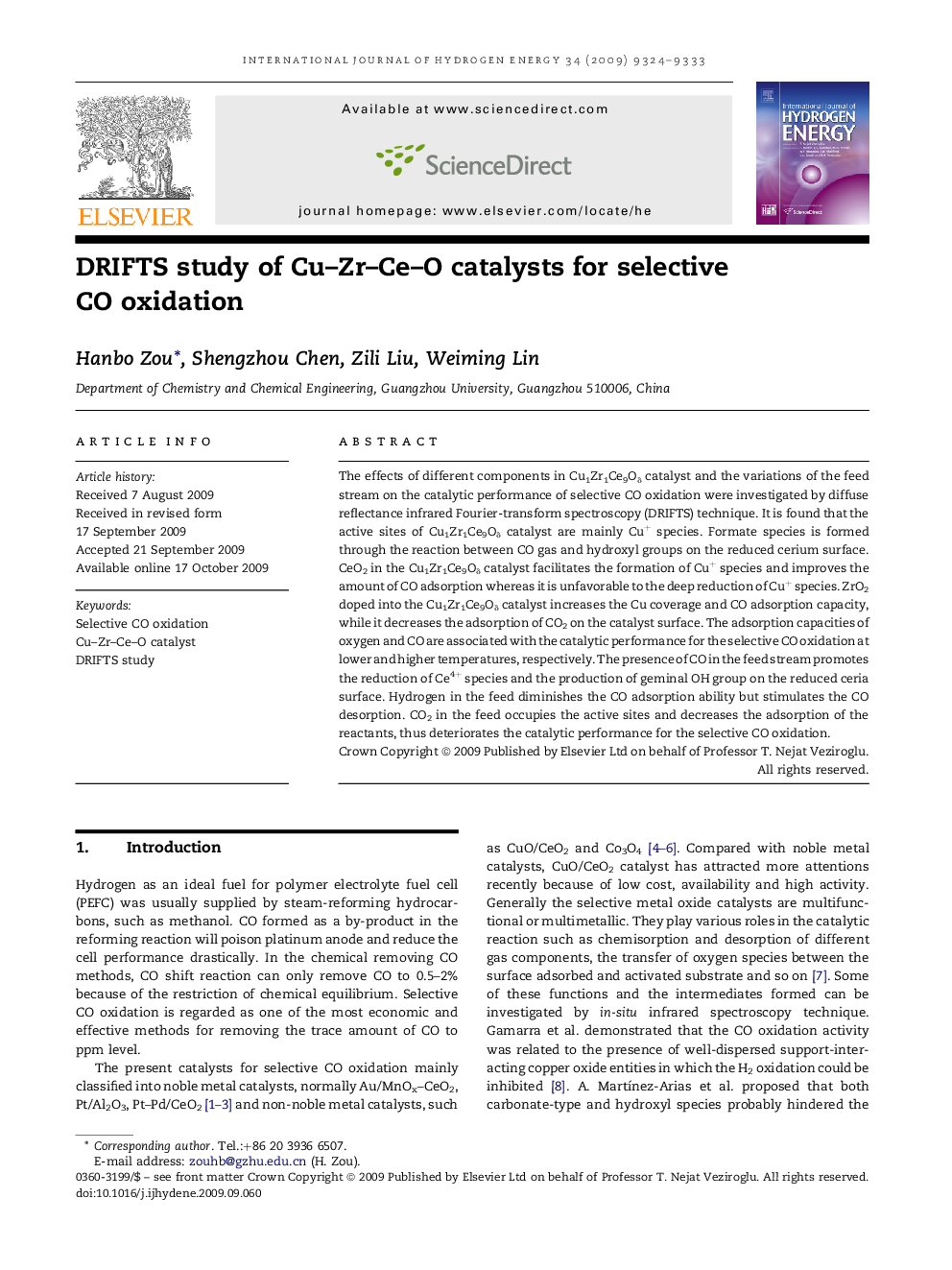| Article ID | Journal | Published Year | Pages | File Type |
|---|---|---|---|---|
| 1277223 | International Journal of Hydrogen Energy | 2009 | 10 Pages |
The effects of different components in Cu1Zr1Ce9Oδ catalyst and the variations of the feed stream on the catalytic performance of selective CO oxidation were investigated by diffuse reflectance infrared Fourier-transform spectroscopy (DRIFTS) technique. It is found that the active sites of Cu1Zr1Ce9Oδ catalyst are mainly Cu+ species. Formate species is formed through the reaction between CO gas and hydroxyl groups on the reduced cerium surface. CeO2 in the Cu1Zr1Ce9Oδ catalyst facilitates the formation of Cu+ species and improves the amount of CO adsorption whereas it is unfavorable to the deep reduction of Cu+ species. ZrO2 doped into the Cu1Zr1Ce9Oδ catalyst increases the Cu coverage and CO adsorption capacity, while it decreases the adsorption of CO2 on the catalyst surface. The adsorption capacities of oxygen and CO are associated with the catalytic performance for the selective CO oxidation at lower and higher temperatures, respectively. The presence of CO in the feed stream promotes the reduction of Ce4+ species and the production of geminal OH group on the reduced ceria surface. Hydrogen in the feed diminishes the CO adsorption ability but stimulates the CO desorption. CO2 in the feed occupies the active sites and decreases the adsorption of the reactants, thus deteriorates the catalytic performance for the selective CO oxidation.
